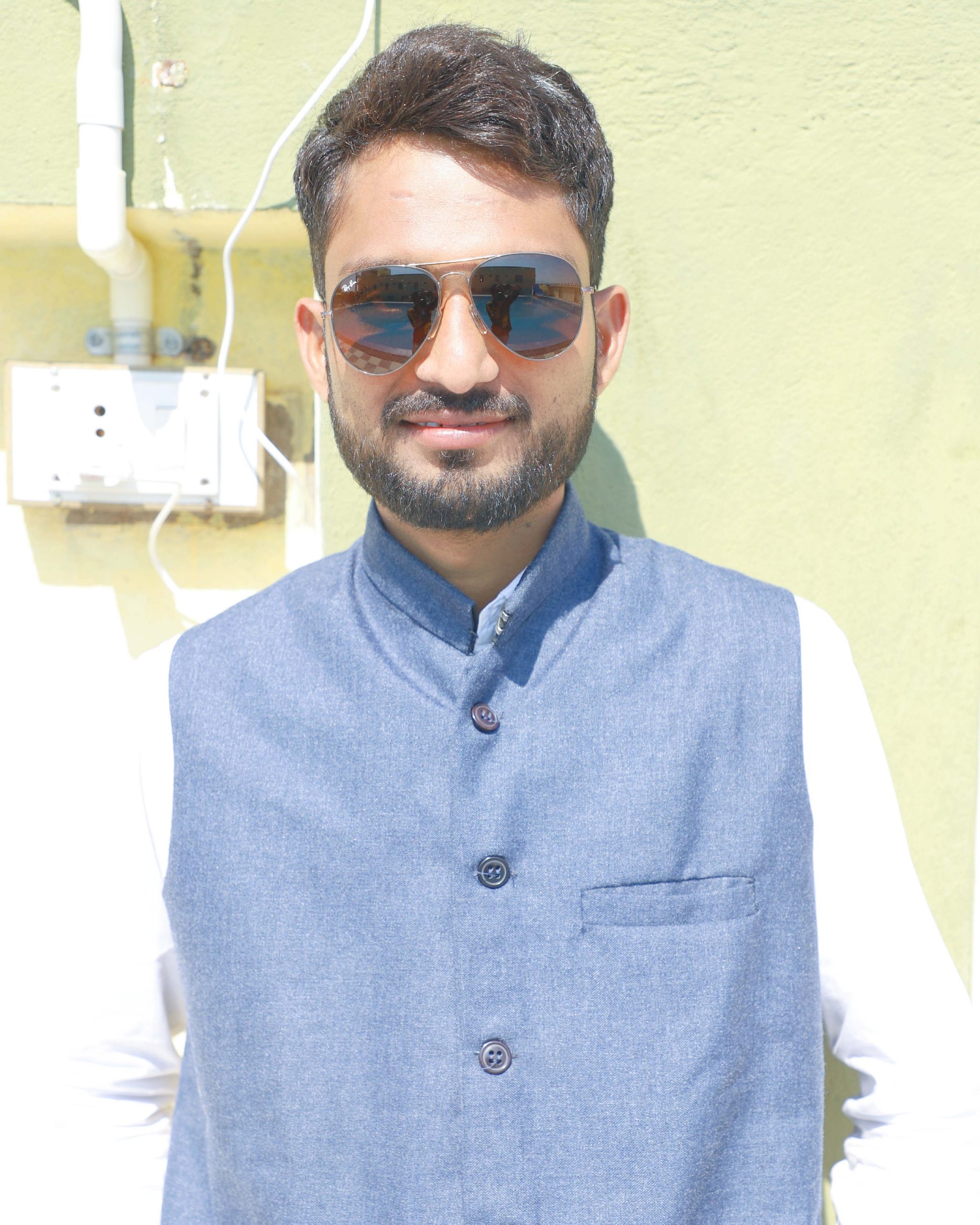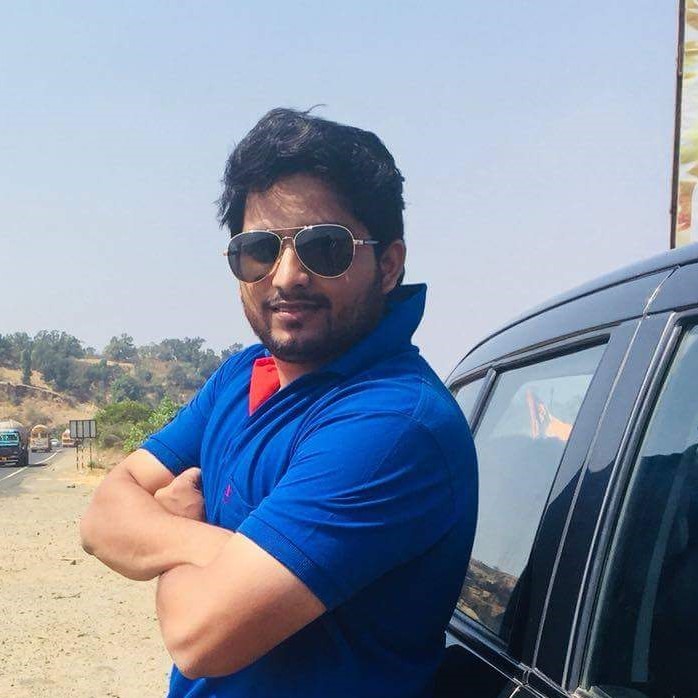Neeraj Bunkar
The idea of the village has always been depicted through the eyes of the oppressor. Bollywood curated this in the visual culture and now ‘Over the Top’ (OTT) platforms are playing this role. A recently released web series, Panchayat, adds to this vision and imagination of the village.
If you give it a critical reading you will notice that the village that Panchayat depicted is not an ordinary village. There can be no hesitation in calling it a ‘Brahmin Village’ where only Brahmins live and people from SC and OBC communities, if any, are submissive, drunkards, comedic, and to put it more explicitly, they live at the mercy of Brahmins. To give it a nationalist and Indian tinge, Panchayat also has a handsome young boy as a soldier of the Indian Army. To instill patriotic feelings in the viewers, the makers created an angle in which he becomes a martyr after an attack while performing his duty on the Jammu and Kashmir border. Of course, he is Brahmin, Rahul Pandey. This implies that Brahmins on the ground, whether in politics or village development, are making significant efforts for India. As a result, they should be regarded as true deshbhakts (patriots). On the other hand, the contribution of Dalits to the process of nation-building is not given due recognition, and for the so-called upper caste people, Dalits are just a supporting tool across all spaces.
In this essay, I will take a look at the Panchayat web series and analyse it at the scene and character level. For this I have selected some frames from the series. I contend that Dalits are portrayed as hopeless, poor and voiceless and conversely, Brahmins are portrayed in the web series as smart, able and articulate. This reiterates their mentality of being unable to digest the outspoken and smart Dalit in their casteist imagination, and this is what the makers of Panchayat have done to romanticize rural life by inappropriately portraying Dalits and OBCs.
The Panchayat web series directed by Deepak Kumar Mishra, a Brahmin, portrays a village in India through a Brahmin lens. All the major characters in the series belong to the Brahmin, other so-called upper caste communities: for instance, Abhishek Tripathi (a village panchayat secretary), Brij Bhushan Dubey (former village sarpanch and husband of the present village sarpanch), Prahlad Pandey (deputy village sarpanch), Vikas Shukla (secretary’s assistant), Kusum Shastri (DM), Virendra Gupta (BDO), Bhushan Sharma (rival of the sarpanch), Siddharth Gupta (Abhishek’s friend), Brijesh Mishra (Bus driver). Such a beautiful, one-of-a-kind village in the country!
Frame 1

The village depicted in ‘Panchayat’.
Frame 2
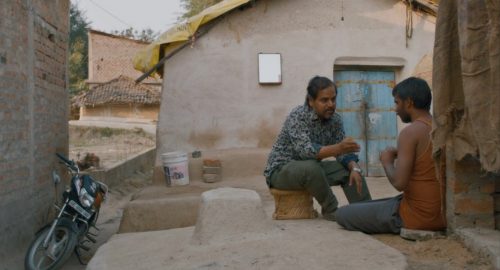
Bhushan Sharma (sitting on the wooden chair) pretending to talk to a Dalit man, Vinod.
Frame 3

Bhushan Sharma (sitting on a chair), imparting knowledge to Vinod, a Dalit man.
Frame 4
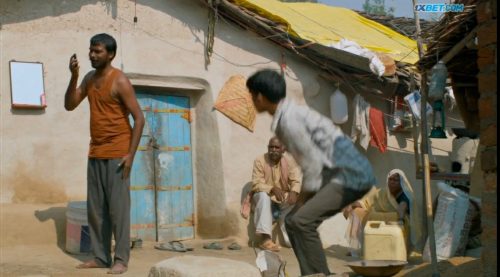
Vinod, a Dalit man, talking to Secretary, Abhishek Tripathi on a call, requesting him to install a toilet commode.
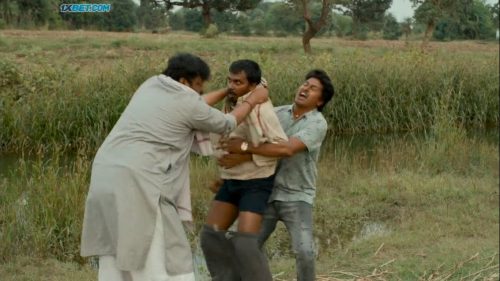
Two Brahmins forcing Vinod, a Dalit man (in middle), to follow their instructions to save the prestige of the village.
Frame 6
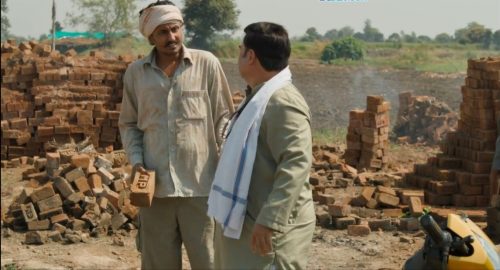
The owner of the brick kiln (a Brahmin man) scolding and giving instructions to a labourer.
In Frame 6, A Brahmin brick kiln owner often scolds the workers for no reason. This is again the arrogance of his caste position in the hierarchy where Brahmins consider themselves to be at the top and others at the bottom. This ego is flaunted through all the episodes.
Frame 7
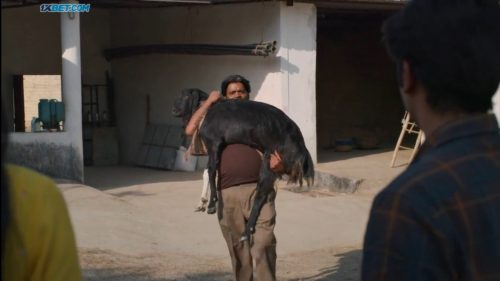
A Dalit man with a goat in his arms.
Consider a conversation between Bhushan Sharma, a so called upper-caste man and Vinod, from the Dalit community in frame two. It goes like this:
Bhushan comes on his bike and stops in front of Vinod’s house. Seeing him, Bhushan asks, “Has your toilet got ready, Vinod?”
Vinod simply nods his head without uttering a single word. Just then Bhushan gets off the bike and then, as we see in the frame, he is sitting on the chair while Vinod is sitting on the ground.
Vinod says, “I will wait for one week, what can I do?”
Bhushan replies, “You have been waiting for a year. How much more will you wait now?”
Vinod says, “It would have been fixed today, Bhushan Bhaiya (brother – respectful term for someone older). What should I say to the secretary if the seat broke? Tell me.”
Bhushan replies, “You will have to speak up, Vinod. Otherwise, these people won’t behave. Today, the seat smashed into the doorframe and broke. Tomorrow, it will smash into a buffalo and day after, into a bull. The seat will keep breaking there. And you will keep shitting in a hole here in the name of a toilet. Is that what you want to do for the rest of your life?”
Vinod in a low and helpless tone replies, “So what should I do, Bhaiya?”
Bhushan holding Vinod hand, says, “You will have to speak up, you will have to speak up, Vinod.”
It shows how Dalits are used by Brahmins for their own interests. And it is assumed that Dalits cannot think for themselves and need to be guided in anything and everything.
In the third frame, Vinod talks to Bhushan Sharma while looking up. The camera angle is set in such a way that Vinod is looking up and the Brahmin Bhushan is positioned at the top so that Vinod has to face upwards, i.e., dependent on the upper strata of the society.
In frame five, Vinod is being forced to leave without wearing pants by two Brahmin men. The question is why did Vinod go over there? The answer is, because he had gone out in the open to defecate at the provocation of Bhushan Sharma, another Brahmin of the village, so that the inspection by the collector could result in a breach and the name of the village becomes infamous because the village had been declared ‘open defecation free’ (ODF). Prahlad Pandey, in this scene, says to Vinod, “Vinod, son, listen to me. Our village has been declared as ODF. If District Magistrate (DM) ma’am sees you defecating here, the honour of our village will be lost. Aren’t you bothered about the honour of the village? Who will do it if not you?” It implies that it is the responsibility of only Dalits to preserve the honour of the village, respect everyone and obey the instructions given by the brahmins without even questioning.
Cut to the next scene, we see Vinod sitting on a chair next to his mother, who is sitting on a chair too, and his father comes from the toilet with a happy face. Vinod and his family using the Brahmin Sarpanch’s toilet is portrayed in such a way that by using the toilet they have fulfilled all the wishes they have dreamt of. Brij Bhushan Dubey (Pradhan) and Prahlad Pandey are watching them with angry faces sitting at a distance. Pandey says to Dubey, “What should I tell you, Pradhan Sir? The situation was such that I had to promise him.” Dubey replies to Pandey, “You have turned my house into a public toilet.” When the secretary’s friend comes to the village and goes to the Pradhan’s house, the Pradhan insists on inquiring about his caste. Pradhan becomes happy when he comes to know that he is a Gupta. The same happiness is missing in this scene and the reason is caste, if Vinod was of a so-called upper caste, Pradhan would not have had any problem with him.
This shows that only Vinod’s house in the entire village does not have toilet facilities, although the village has been declared ODF. Even for a toilet, he has to depend on Brahmins. Throughout the web series, Vinod has been shown to be so obsequious. When he talks to Brahmins, he speaks in a low voice, full of respect, sitting below them.
Frame 8
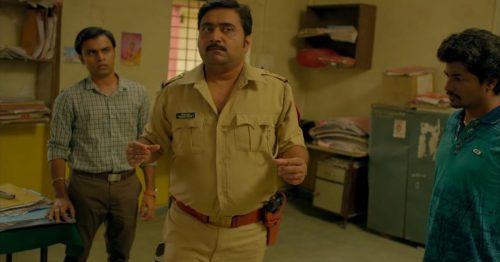
A sub-inspector, Sanjay Yadav (OBC) mimicking in the Panchayat office.
Frame 9
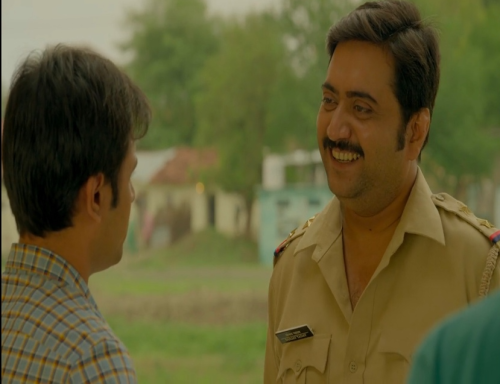
A sub-inspector, Sanjay Yadav joking with the secretary.
Frame 10
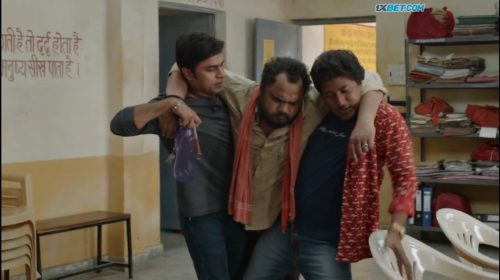
Two Brahmin men escorting a drunk driver Balram Yadav (in the middle).
Frame 11
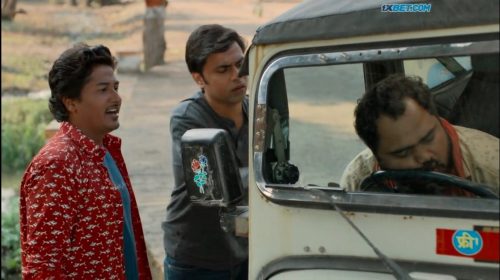
Two Brahmins helping the drunk driver Balram Yadav after he had an accident.
In the eighth and ninth frames, the sub-inspector, Sanjay Yadav, is not taken seriously by anyone when he comes to inquire about the theft at the panchayat office. He acts as a comedian doing stupid things as part of the investigation. It seems that he doesn’t know anything, In the end, Brij Bhushan Dubey asks him to stop the investigation and leave the panchayat. This can happen only in the so-called upper-caste imagination for OBCs, but in real life, you will not find a Yadav in the rank of sub-inspector being treated in this way.
In the tenth and eleventh frames, the driver Balram Yadav is driving a car, spreading awareness about the ‘Drug De-Addiction Campaign’ in the village, but he himself is intoxicated. So, what message do the filmmakers want to convey to the audience through this? Is it that people from marginalized backgrounds (OBC) continue to drink and drive, even when it is a campaign against this particular cause? This also shows how casteist the filmmakers of this series are – when they have to portray a simple bus conductor, they deployed a Brahmin character, Brijesh Mishra, but for the drunk, unwell driver, they chose a Yadav, OBC driver.
Frame 12
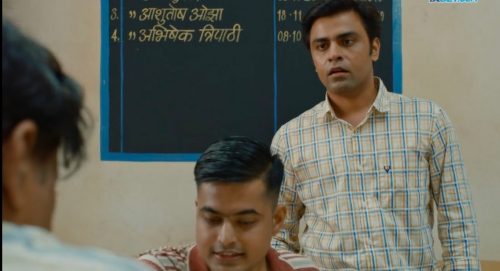
Brahmins playing a game in the panchayat office.
Frame 13
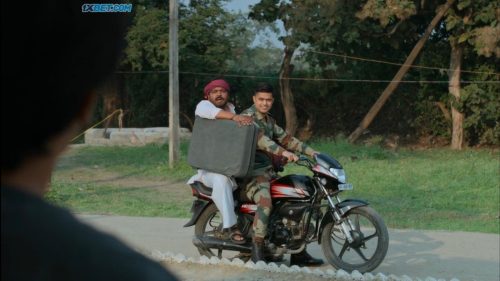
A Brahmin youth in army uniform with his father.
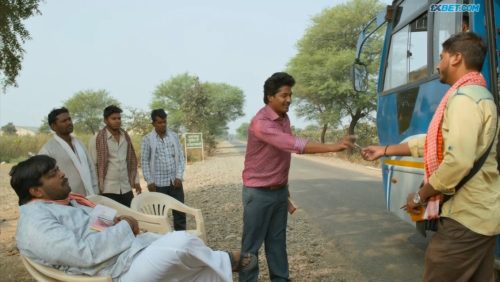
Brijesh Mishra, a good and ordinary Bus conductor.
The twelfth and thirteenth frames show a confident Brahmin Indian young soldier who is going to serve the country. In the twelfth frame, one would notice another Brahmin name on the board, Ashutosh Ojha—the former secretary of the panchayat. A clear difference can be seen in the portrayal of Brahmin characters and Dalit-Bahujan characters in this web series. Their passion for the country, either on the border or inside the country, is considered a great contribution, implying that it is the Brahmins who made all the sacrifices for the country.
~
Neeraj Bunkar (neeraj2meg@gmail.com) is a PhD student researching Caste and Dalit realities in Rajasthan Based Hindi Cinema in the School of Arts and Humanities, Nottingham Trent University, United Kingdom.
Pictures courtesy: Internet.

